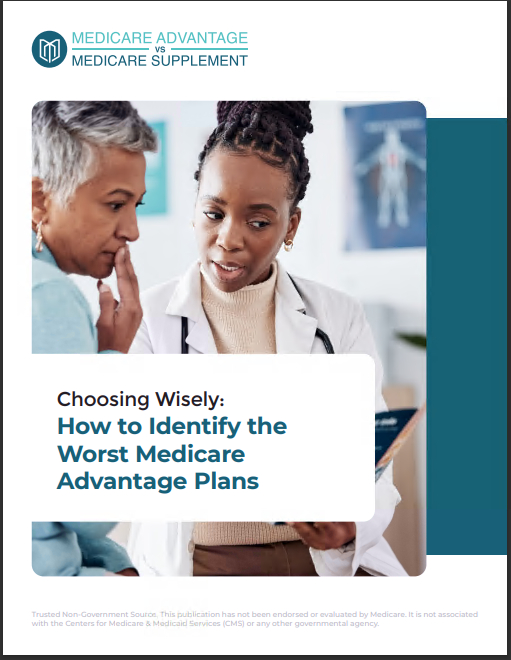Key Takeaways
-
Medicare Supplement (Medigap) plans remain a reliable option in 2025 for reducing out-of-pocket expenses and managing unpredictable healthcare costs.
-
Choosing the right Medigap plan depends on timing, understanding plan differences, and evaluating your current and future medical needs.
Why Medicare Supplement Plans Are Still Relevant in 2025
If you’re enrolled in Original Medicare in 2025, you may be noticing that while it covers a wide range of services, it doesn’t pay for everything. Out-of-pocket expenses like deductibles, coinsurance, and copayments can still add up, especially if your healthcare needs increase with age. That’s where Medicare Supplement plans, also known as Medigap, continue to play a valuable role.
These plans help fill the gaps in Original Medicare coverage. And in a healthcare environment that’s growing more complex each year, having a predictable layer of protection against unexpected costs remains just as important now as it ever has been.
Understanding the Basics of Medicare Supplement Plans
Medigap plans are standardized policies that work alongside Original Medicare (Parts A and B). They do not replace Medicare; instead, they complement it by covering some or all of the costs Medicare doesn’t fully pay for.
Here are the key features of Medigap plans:
-
Only available to those with Original Medicare
-
Sold by private insurers but regulated by federal and state laws
-
Do not include prescription drug coverage (you’ll need a separate Part D plan for that)
-
Standardized across most states—Plan G is Plan G regardless of the company
You must be enrolled in both Part A and Part B to buy a Medigap policy, and you’ll pay a monthly premium for the plan in addition to your Part B premium.
What Changed in 2025 and What Stayed the Same
While Medigap plans themselves have remained consistent in structure, 2025 has brought changes in Medicare’s costs that could influence which plan works best for you:
-
Medicare Part A deductible in 2025: $1,676 per benefit period
-
Medicare Part B premium: $185 monthly
-
Part B deductible: $257 annually
Medigap plans continue to cover these expenses to varying degrees depending on which plan you choose. As these deductibles and premiums increase slightly year by year, having a Medigap plan can help soften the financial impact.
However, it’s important to remember that Medigap policies sold to new enrollees as of January 1, 2020, can no longer cover the Part B deductible. This change still applies in 2025.
How Enrollment Timing Affects Your Options
The best time to enroll in a Medicare Supplement plan is during your Medigap Open Enrollment Period, which starts the first month you’re 65 or older and enrolled in Part B. This period lasts six months, and during it:
-
You cannot be denied coverage for pre-existing conditions.
-
Insurers cannot charge you more based on your health.
-
You have access to all standardized plans offered in your area.
Outside this window, you may face underwriting and could be denied coverage or charged more depending on your health history. That’s why it’s essential to plan ahead.
How to Compare the Available Plans
In most states, there are up to ten standardized Medigap plans, labeled A through N. While each plan offers a different combination of benefits, the most commonly considered in 2025 are Plans G, N, and High-Deductible G.
Here’s how they compare on some key features:
-
Plan G offers broad coverage, paying nearly all out-of-pocket costs except the Part B deductible.
-
Plan N has slightly lower premiums but includes small copayments for office and ER visits and doesn’t cover Part B excess charges.
-
High-Deductible Plan G has a lower monthly premium but requires you to pay a higher annual deductible before full benefits kick in.
These differences matter if you want to balance monthly costs with the potential for unpredictable medical expenses.
Weighing Costs: Premiums, Deductibles, and Copayments
When evaluating Medigap plans, focus on more than just premiums. A lower premium may look appealing, but if you need regular care or frequent specialist visits, the added costs can outweigh any savings.
Here are a few financial aspects to weigh:
-
Monthly premium: Varies by age, location, and plan
-
Annual deductible (if applicable): Higher for high-deductible plans
-
Out-of-pocket limits: Most Medigap plans don’t have formal out-of-pocket limits, but the protection they offer against cost-sharing helps control these expenses
In 2025, inflation in the healthcare sector continues to drive up service costs, making it more crucial to ensure you’re not overexposed financially.
Considering Your Health Needs and Lifestyle
No two Medicare beneficiaries have identical health situations, so your Medigap plan choice should reflect your unique needs. Ask yourself:
-
Do you have chronic conditions requiring frequent medical visits?
-
Are you planning to travel often within the U.S.? Medigap is accepted nationwide.
-
Would you prefer fewer bills and more predictable monthly expenses?
If you answered yes to any of the above, a more comprehensive plan like Plan G may be worth the higher premium.
What If You Missed Your Initial Enrollment?
In 2025, if your initial enrollment window has passed, you still have options. Depending on your situation, you may qualify for guaranteed issue rights—for example, if you lose other health coverage or your Medicare Advantage plan exits your area.
When you qualify for guaranteed issue, insurers must offer you a Medigap policy without health underwriting. However, these opportunities are time-limited and vary by state.
If you don’t qualify for guaranteed issue rights, you can still apply for Medigap, but be prepared to answer medical questions and possibly face higher premiums.
Prescription Drug Coverage and Medigap in 2025
Medigap plans don’t include prescription drug coverage. You’ll need to enroll in a standalone Medicare Part D plan to help with prescription drug costs.
In 2025, some key Part D changes include:
-
An out-of-pocket cap of $2,000 annually on drug costs
-
Monthly payment options under the Medicare Prescription Payment Plan
-
Improved insulin cost caps ($35 per month)
When pairing Medigap with Part D, make sure the drug plan you choose fits your specific medication needs, especially if you take several prescriptions.
Can You Switch Medigap Plans in 2025?
Yes, but there are conditions. Unlike Medicare Advantage, there’s no annual open enrollment period for Medigap. You can apply to switch plans at any time of the year, but unless you’re in your Medigap Open Enrollment Period or qualify for guaranteed issue, underwriting will apply.
If you already have a Medigap plan and want to switch:
-
Compare the new plan’s benefits and premium carefully.
-
Apply for the new plan before canceling the current one.
-
Make sure your new policy is approved before making changes.
Some states offer special rules or Medigap birthday rules that allow you to switch without underwriting—check with your state’s department of insurance.
The Future of Medigap Plans and What to Expect
As Medicare continues to evolve in response to demographic and financial pressures, Medigap remains a core component for those sticking with Original Medicare. With more beneficiaries turning 65 each year, demand for plans that reduce financial risk is expected to grow.
In 2025 and beyond, here’s what you can anticipate:
-
Potential for future legislation affecting plan availability or benefit structure
-
Continued premium increases aligned with healthcare inflation
-
Greater awareness of high-deductible options as a cost-saving measure
Staying informed and proactive about your coverage choices can help you adapt to changes and make cost-effective decisions.
Getting the Support You Need to Choose Confidently
Choosing a Medicare Supplement plan isn’t just about picking the lowest price—it’s about protecting yourself from the unknown. In 2025, the stakes are high: healthcare costs aren’t slowing down, and your peace of mind depends on having solid coverage that matches your life.
If you’re unsure which Medigap plan fits your situation best, or if you missed your initial enrollment window and want to explore your current options, get in touch with a licensed agent listed on this website for professional advice tailored to your needs.










